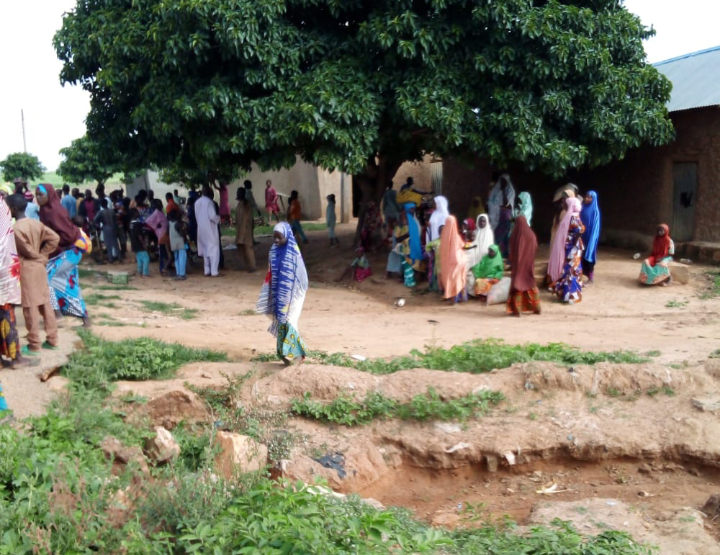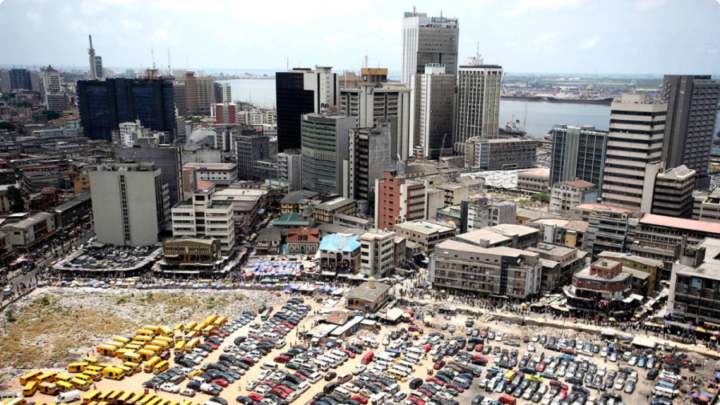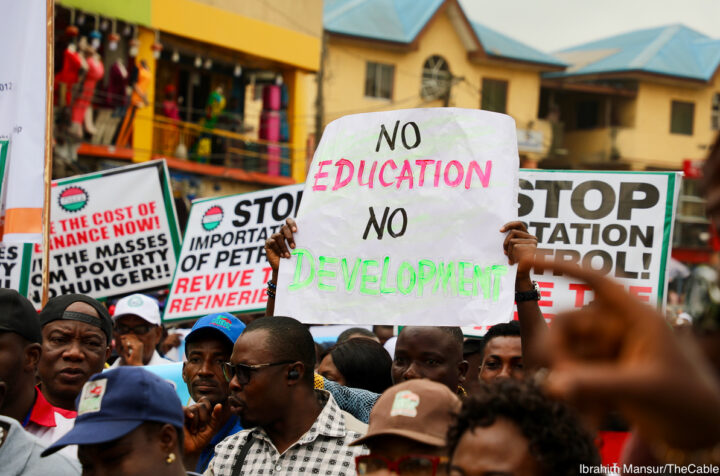Caption: Residents of Damari community fleeing from bandits
All development is local. Regardless of which tier of government or non-governmental organisation initiates development, it is ultimately domiciled in a community. Effectively, community development is at the nucleus of local, state and national development. Community building, therefore, becomes a veritable form of social engineering that facilitates awareness and participation at the grassroots in the socio-economic and political advancement of their respective societies.
Instinctively, people are socially keen so there is a very high tendency for groupthink sentiments to override personal philosophies because the more influential the collective is, the more likely the individuals to become ideological synecdoches of such groups. Hence if development and governance are not anchored on this granular model, it will be difficult to become sustainable. Community building can then be seen as the domestication of the values and signatures of the wider society. It is the distilling of a wholesale national culture into retail forms, and sometimes the reverse is applicable; the extrapolating of community values to the mainstream of society. Whichever way it swings, the success or otherwise of nation-building critically hinges on community building.
At the core of community-building is fostering connections; integrating different demographics into an overarching vision that serves the greater good. That’s one of the first conditions for effective community building, there must be a big idea that causes multiple interests to converge. Especially in plural societies where consensus is a very expensive commodity, the buy-in of the numerous stakeholders must be sought in such a way that envisioned successes far outweigh immediate sacrifices.
Community building, just like anything of significance, rises and falls on leadership. It takes influence to positively affect outcomes or inspire certain behaviours. It’s leadership that principally uses the vehicle of community organisation to achieve community building in specific areas such as health, politics, faith, business or socio-cultural goals. Community leaders, therefore, are critical to these processes because their influence cuts across otherwise conventional hierarchies; their roles in achieving sustainable impact are sin qua non.
Advertisement
Sustainability is important to community building because the impact is often not an outcome but an ongoing process. The specifics are typically nuanced when communities are compared to communities owing to the unique configuration and needs of those demographics, but they broadly subscribe to certain tenets. Below are some important elements for effective community building for sustainable impact.
- Knowledge-based: The literal levels of members of the community, how they access and consume information are major determinants of achieving sustainability. Many communities are being degraded simply because the leadership and the critical mass of members don’t know any better. Formal and informal education and information dissemination are important to the collective progress of any community. This means that not only should community members have access to formal education, which gives them an enlightened perspective with which to interact with the rest of the world, but the leadership must also be in the loop with global best practices. An example is the global commitment to significantly transit from fossil fuels to green energy: communities should prepare and plan for this inevitable reality. This should be reflected in budgetary allocations, academic curricula, manufacturing guidelines, construction and housing designs etc. It takes a high level of corporate awareness and investment in future-proof practices to ensure that public assets – both tangible and intangible are protected from obsolesce.
- Inclusiveness: Communities across the world are becoming increasingly more diverse, meaning that traditional values are becoming more challenged. It also means that the quest for representation has grown louder than ever before; every sub-group wants their interests fully represented in decision-making. This is a very important point to note because the lack of inclusion invariably leads to marginalization, and such is antithetical to the fundamentals of community. Simply put, people will be more invested in the sustainability of their respective communities when they perceive they have a stake in it. No race, gender or age-grade or any other demography has the exclusive preserve of community-building ideas, everyone wants to have a sense of belonging. Where this respect for diversity is entrenched, people typically become guardians and advocates for their communities because they take ownership. The presence of social cohesion makes it easier to drive sustainable impact because sabotage is a card that opposing interests usually throw into the works when they perceive that they are being side-lined from mainstream decision-making. For example, in certain communities, women are not sufficiently represented in leadership, so they are forced to live with the decisions that others have made for them. Whilst most women take up the challenge and fight for inclusion, some others become indifferent, and the aggregation of such people further jeopardises sustainable impact.
- Progressive Laws: Community building takes place in the context of extant laws. Such laws can either prove to be a catalyst for sustainable impact or antagonistic to it. Currently, the United States of America is going through an existential crisis. Whilst the 2nd Amendment guarantees the rights of citizens to bear arms, there have been 450 mass shootings – causing almost 33,000 deaths. Clearly, that is not sustainable. Historical evidence shows that when former President Clinton placed a ban on certain automatic weapons, the Justice Department recorded a considerable drop in homicides. However, the 2nd Amendment is a hill that most Republicans are willing to die on – literally. Heart-wrenching episodes such as the mass shooting in Sandy Hook and Uvalde didn’t move the needle, especially with huge gun lobbyists such as the National Rifle Association (NRA) funding pro-gun candidates. The same applies to the Roe vs Wade judgement that repealed age-long reproductive rights for women. Criminalising abortions exposes women to higher risks of unsafe procedures. No surprise that these issues are on the ballot in the November midterms. These are two examples of how laws can stand in the way of sustainable impact.
- Tech and Training: In a deeply-digitalised world, technology places a major role in many things, including sustainable impact. Technology can be used to facilitate avant-garde and innovative practices in the community. Technology offers a more scientific approach to community building by inculcating efficiency, tracking socio-economic progress and reducing collateral damage. Deconstructing the word technology will help communities understand that technologies are basically innovative enablers, and they have to be appropriated by different communities to meet their needs. For a rural community, it could mean access to basic solar lamps, mobile phones or new ways to preserve their farm produce with the resources that they have. Training upskills certain formal and informal gatekeepers who manage critical infrastructure and users who interact with such public assets. This immersive deployment of information technologies will further animate social networks – whether in places such as game reserves, market squares or schools. Technology will see the increased efficiency of energy use, transportation and manufacturing impact on the environment. This is important for expanding socio-economic opportunities and improving the quality of life. It is, however, important that communities remain people-centric and not tech-centric.
- Urban Planning and renewal: this is very important because population growth, urban migration, and socio-spatial polarization are factors that necessitate actionable plans toward sustainable impact. Community building that prioritizes sustainability factors in eco-friendly policies and practices, green zones, protects natural resources and sustainable technology that reduces carbon emissions. The tourism sector, for example, will benefit greatly from the value-add to environmental aesthetics, cultural exchange and historical significance. This will usher in user-friendly and people-centric communities. By improving ecological footprints, efficiently recycling wastes and reducing exploitation of natural resources, communities can inch closer to sustainability.
Community building for sustainable impact may be complex but does not have to be complicated. Nigeria can achieve all of these and more. It takes leadership across all levels for the right conversations to happen, followed by a holistic commitment to implementing progressive ideas. One of the factors inimical to the realization of these noble objectives is the political asphyxiation of local governments, where most developments are domiciled. There is an untoward concentration on the federal and state governments to the detriment of local communities who should have their constitutionally-guaranteed distinction from the other two tiers of government. It is also incumbent on us as citizens to play our part, one person at a time.
Advertisement
Views expressed by contributors are strictly personal and not of TheCable.
Add a comment







